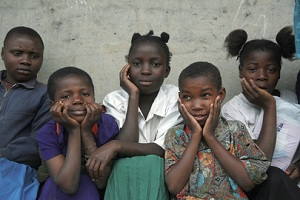Listening to Youth in Armed conflict
 The world is still a dangerous place for children. It is estimated that approximately 300,000 armed children and youths are living in conflict zones, half of them girls and the most vulnerable. These children are victims, forced to live in constant violation of their rights by being subjected to recruitment, mutilation, abduction, sexual violence, attacks on schools and hospitals and the denial of necessary humanitarian aid.
The world is still a dangerous place for children. It is estimated that approximately 300,000 armed children and youths are living in conflict zones, half of them girls and the most vulnerable. These children are victims, forced to live in constant violation of their rights by being subjected to recruitment, mutilation, abduction, sexual violence, attacks on schools and hospitals and the denial of necessary humanitarian aid.
Within the context of the International Year of Youth, a briefing session on Youth and Armed Conflict was held on 23 June, hosted by the UN Programme on Youth (UNPY) in cooperation with the Permanent Mission of Germany to the UN and the Office of the Special Representative to the Secretary-General for Children and Armed Conflict and moderated by Chantale Walker from the Permanent Mission of Canada to the UN.
The session stressed the importance of the development of strategies before, during and in post-conflict, focusing on rehabilitation; education as a key factor for the inclusion of children into communities; building networks; and peacebuilding operations.
The global importance and priority of the protection of children in armed conflicts within the Security Council and in the international community was also recalled. The event also highlighted accomplishments, efforts and results achieved so far including the strengthening of legal protection and standards, the role of reports of missions on decision-making and resolutions.
The speakers agreed that protection, education and the inclusion of these children in building their communities, are essential for the promotion of peace. Grace Akallo, former child soldier and founder of United Africans for Women and Children Rights, spoke with a voice representing thousands, insisting on “the importance of education, care and protection from member states to save children and youth from conflict”.
Many challenges remain to be resolved and there was agreement for the necessity in achieving long-term programs to re-integrate former child soldiers into society and the need of major efforts in implementation and in mobilizing the international community.
